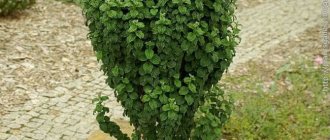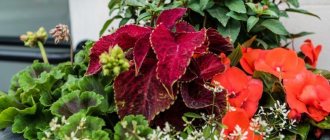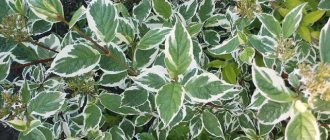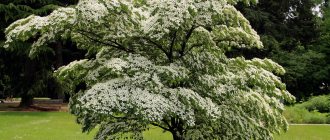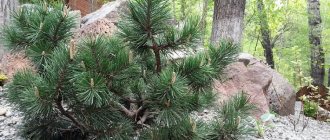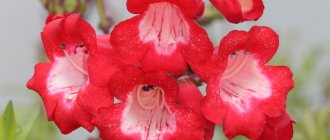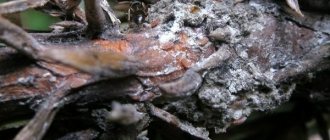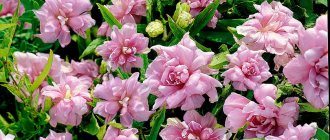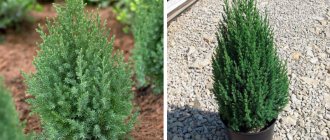Types of flowering plant
| Cornus canadensis | |
| Grown in Elphin Lakes, British Columbia. | |
| Save Status | |
| Security (NatureServe) [1] | |
| Scientific classification | |
| Kingdom: | Plantae |
| Clade : | Tracheophytes |
| Clade : | Angiosperms |
| Clade : | Eudicots |
| Clade : | Asterids |
| Order: | Cornales |
| Family: | Cornaceae |
| Genus: | Cornus |
| Subgenus: | Cornus subg. Arctocrania |
| Variety: | C. canadensis |
| Binomial name | |
| Cornus canadensis | |
Cornus canadensis
(
Canadian dwarf dogwood
,
Canadian bunchberry
,
Quatre-Temps
,
crackerberry
,
creeping dogwood
) is a species of flowering plants in the dogwood family, native to eastern Asia (Japan, Korea, northeastern China (Jilin provinces) and the Russian Far East), the northern United States , Colorado, New Mexico, Canada and Greenland.
[2]Unlike its relatives, which are mostly large trees and shrubs, C. canadensis
is a creeping, rhizomatous perennial that grows up to 20 cm (8 in) tall.
Description[edit]
Cornus canadensis
- a slow-growing herbaceous perennial plant 10–20 cm high, usually forming a carpet. Aboveground shoots grow from thin creeping rhizomes placed in the soil to a depth of 2.5–7.5 cm and form clonal shoots and colonies under trees. Aboveground stems, located vertically, are thin and unbranched. The leaves are arranged in an opposite manner on the stem, but are grouped with six leaves, which often appear to be in a whorl because the internodes are compressed. Leafy green leaves are produced near the terminal node and consist of two types: 2 large and 4 smaller leaves. Smaller leaves develop from axillary buds of larger ones. Shiny dark green leaves with petioles 2 to 3 mm long and obovate blades. The blades have entire edges, are 3.5 to 4.8 cm long and 1.5 to 2.5 cm wide, with 2 or 3 veins, wedge-shaped bases and sharply pointed apices. In autumn the leaves have reddish veins and turn completely red.
Flowers[edit]
Mature and immature flowers, Bonnechere Provincial Park, Ontario
In late spring to mid-summer, white flowers are produced 2 cm (25/32 in) in diameter with recurved petals that are oval-lanceolate in shape and 1–2 cm (13/32 – 25/32 in) in length . [3] The inflorescences consist of complex terminal racemes with large, showy white petal-like bracts. When immature, the bracts are green. The bracts are broadly ovate and 0.8 to 1.2 cm (5/16 to 1/2 in) long and 0.5 to 1.1 cm (3/16 to 7/16 in) wide, with 7 parallel working veins. The lower nodes of the stem have greatly reduced rudimentary leaves. The calyx tube is obovate in shape and 1 mm long, covered with densely pubescent hairs along with grayish-white appressed trichomes. The stamens are very short, 1 mm long. The anthers are yellowish-white, narrowly ovoid in shape. The styles are 1mm long and smooth. Plants are mostly self-sterile and depend on pollinators for their sexual reproduction. Pollinators include bumblebees, solitary bees, meat birds and syrphid flies. [4]The fruits look like berries but are drupes.
Pollen release[edit]
Each flower has highly elastic petals that flip back, releasing elastic threads that rise up under the petals. The threads snap upward, releasing pollen from containers attached to the threads. The stamens accelerate at a speed of 24,000 m/s2. [5] This movement occurs in less than half a millisecond, and the pollen experiences two to three thousand times the force of gravity. [6] The cluster has one of the fastest plant actions ever discovered, requiring a camera capable of capturing 10,000 frames per second. [7]
Fruits[edit]
Unripe flowers
Fruits
The seeds are green, spherical, turning bright red when ripe in late summer; each fruit has a diameter of 5 mm and usually contains one or two ellipsoidal-ovoid stones. The fruits come into season in late summer. [8] The large seeds inside are slightly hard and crunchy.
Decorative turf - care after planting
Dera seedlings after planting are very sensitive to drought, so watering is carried out in the absence of rain once every 2 days for a month, and then over the next year they are watered abundantly once every 1 week, maintaining average soil moisture. In the summer heat, watering is increased.
Variegated turf in autumn, variety “Wolf's Eyes”
Mature 4-5 year old plantings can withstand short-term drought, but in conditions of prolonged absence of water the foliage withers and dries out. After abundant irrigation (2-4 buckets per bush), the elasticity of the leaves is restored. Irrigation in summer is best done in the evening, pouring water into the hole near the trunk.
Attention! Good growth and decorativeness of the crop are possible only with constant substrate moisture
Mulching the soil around plantings, especially young ones, will help prevent the evaporation of water from the soil and protect it from overheating in summer and cold in winter. Mulch from compost or peat is poured in a circle near the trunk, without touching the base of the shoots or the trunk.
Taxonomy[edit]
Although these plants are unique as a species, their general arrangement varied in different botanical treatments. If we consider the genus Cornus
broadly, as done here, the species is called
Cornus canadensis
and is included in the subgenus
Arctocrania
.
[9] However, if Cornus
in a narrower sense, excluding this species, it can instead be classified as
Chamaepericlymenum canadense
or
Cornella canadensis.
[10] [11]
Where there is a bush, a forest species, and Cornus suecica
, a marsh species, grow near each other in overlapping ranges in Alaska, Labrador and Greenland, they can hybridize by cross-pollination, producing plants with intermediate characteristics. [12] [13]
Derain shrub - planting
Bare-rooted seedlings are planted in autumn or spring. Shrubs grown in containers can be planted at any time during the current season.
To successfully grow turf, you need to choose the right location and soil composition. The culture thrives in fertile, moist and well-drained soils with a neutral to slightly acidic pH, in a warm spot in the garden, protected from cold winds, in sun or partial shade.
Varieties with colored shoots are best planted in full sun, which enhances the intensity of their color.
It is recommended to plant bare-rooted seedlings immediately after purchase. If it is not possible to plant them in the near future, then immerse the roots in water and keep them in a shady place.
The size of the planting hole should be 2-3 times larger than the root ball. Before planting, prepare a fertile mixture: two parts of leaf soil are mixed with two parts of compost or humus, one part of peat moss (peat) and one part of sand.
Blooming Kouza turf "Scarlet Fire"
At the bottom of the pit, lay a drainage layer of broken brick or large expanded clay. Then pour a layer of earthen mixture. The seedling is placed in a hole and sprinkled with the remaining soil so that the root collar remains just above the soil level.
Pack the soil around the plant and water well. If the soil has shrunk, add the required amount, keeping an eye on the root collar of the seedling.
Hedge trimming
To grow a plant as a hedge, turf is planted in a pre-dug trench at a distance of 30-70 cm from each other, depending on the size of the variety.
Links[edit]
- "Cornus canadensis". NatureServe Explorer
. NatureServe. Retrieved April 1, 2022. - RHS AZ Encyclopedia of Garden Plants
. United Kingdom: Dorling Kindersley. 2008. p. 1136. ISBN 978-1405332965. - Murrell, Zach E.; Poindexter, Derick B. (2016). "Cornus canadensis". In Flora of the North American Editorial Committee (ed.). Flora of North America north of Mexico (FNA). 12
. New York and Oxford via eFloras.org, Missouri Botanical Garden, St. Louis, MO, and Harvard University Herbaria, Cambridge, MA. - Barrett, Spencer S.; Helenurm, Caius. 1987. Reproductive biology of boreal forest grasses.
I. Reproduction systems and pollination . Canadian Journal of Botany. 65: 2036-2046. - 1949-, Walker, Marilyn (2008). Wild Plants of Eastern Canada: Identification, Collection and Use: Including Prescriptions and Medicinal Uses
. Halifax, NY: Nimbus Pub. ISBN 9781551096155. OCLC 190965401.CS1 maint: numeric names: authors list (link) - Record pollen catapult at Academia.edu
- Edwards J, Whitaker D, Klionsky S, Laskowski MJ (2005). "Botany: A Record Pollen Catapult". Nature
.
435
(7039): 164. Bibcode: 2005Natur.435..164E. DOI: 10.1038/435164a. PMID 15889081. S2CID 4412631. - ^ a b Lyons, C. P. (1956). Trees, Shrubs and Flowers to Know in Washington
(1st ed.). Canada: JM Dent & Sons. pp. 111, 196. - Murrell, Zach E.; Poindexter, Derick B. (2016). » Cornus subg. Arctocrania". In Flora of the North American Editorial Committee (ed.). Flora of North America north of Mexico (FNA). 12
. New York and Oxford via eFloras.org, Missouri Botanical Garden, St. Louis, MO, and Harvard University Herbaria, Cambridge, MA. - Eyde, R.H. 1987. A case for the conservation of Cornus in a broad Linnaean sense.
Systematic botany. 12 (4): 505-518. - Eid, Richard H. 1988. Understanding Cornus: Mysteries and Progress in Dogwood Taxonomy
. Botanical Review. 54 (3): 233-351. - Neyland, Bonita J. 1971. The forest-marsh complex of southeastern Alaska
. Vegetatio. 22:1-64. - Murrell, Zach E. 1994. Dwarf dogwoods: betweenness and the morphological landscape.
Systematic Botany 19: 539–556. - Hanley, Thomas A.; Cates, Rex J.; Van Horn, Beatrice; McKendrick, Jay D. 1987. Stand age-related differences in the apparent nutritional quality of deer forages in southeastern Alaska. In: Provenza, Frederick D.; Flinders, Jerran T.; MacArthur, E. Durant, compilers. Proceedings - Symposium on Plant-Herbivore Interactions; 1985 August 7–9; Snowbird, UT. Gen. Tech. Rep. INT-222. Ogden, UT: USDA, Forest Service, Intermountain Research Station: 9-17.
- Elias, Thomas S.; Dykeman, Peter A. (2009) [1982]. Edible Wild Plants: A North American Field Guide to Over 200 Natural Foods. New York: Sterling. item 143. ISBN. 978-1-4027-6715-9. OCLC 244766414.
- "Wedding Dress, Bridesmaids' Dresses and Boys' Uniforms". 2018-05-19.
Tree trimming in spring
Pruning is an important step in caring for the tree in the garden. The procedure helps preserve the decorative appearance of the varieties, maintains their compact shape and the required height in the hedge.
Derain in winter
Young shoots have the brightest and most intense color; old branches gradually turn brown and lose their attractiveness. To maintain the winter decorative color of bushes, many gardeners prefer to remove 20-25% of the oldest stems in March of each year.
As an alternative to annual pruning, you can shorten old stems every 2-3 years, leaving only 15-30 cm above the ground. This method stimulates the growth of new shoots well, but do not expect flowering in this case, since flowers form only on two-year growth.
Wood ash as a fertilizer for plants - composition, application and benefits
Young seedlings begin to be pruned only 2-3 years after planting, when they are fully grown. In variegated tree varieties, some branches may form completely green leaves, which are best removed. Tree-shaped varieties and ground cover species do not need to shorten their shoots.
External links [edit]
| Wikimedia Commons has media related to Cornus canadensis . |
- Exploding Dogwood Flowers Williams College website featuring the work of Joan Edwards and Dwight Whittaker, with video and animation.
- Holotype of Cornus canadensis from the Louis-Marie Herbarium (University of Laval).
- Bunchberry, borealforest.org
- Bunchberry, Ontario wildflowers
| Taxon identifiers |
|
Propagation of dogwood by cuttings in spring
The culture is very easily propagated by lateral layering, horse suckers and cuttings. The best time to take cuttings is at the end of the flowering cycle. A suitable stem should break when bent.
Cut cuttings with 2-3 internodes below the leaf buds at an angle of 45 degrees. It is better to remove the leaves. The lower part of the cuttings is first dipped in water and then in a hormone that stimulates root growth. Plant in a pot with a mixture of sand and perlite or universal soil and sand (1:1).
Spray water on the soil and cuttings and cover with a transparent bag. The pot is placed in a shady place in the garden. The formation of roots is possible by maintaining a constant average humidity of the substrate.
Rooting usually takes about 6 weeks. As soon as signs of new growth appear, the bag can be removed and the seedlings placed in a place with bright, indirect light.
Rooted cuttings
Water the plants regularly and use liquid fertilizer, but only half the dose. Grown seedlings with well-formed leaves and roots are transplanted into a larger pot with a fertile mixture and left for the winter in a cool room. Planted in open ground in late spring.
19 unpretentious flowering perennials
Wood cuttings can also be harvested in late autumn and stored in the refrigerator all winter in a closed bag with damp sand. In spring, the rooting technology is the same as described above.
Propagation of derain by seeds
Seeds of hybrid and varietal forms are often sterile, but viable material is commercially available. Seeds require a long period of stratification to germinate. Sown in open ground in October, they germinate in the spring in March or April. Although some seeds may take a year to germinate.
Young shoots are weak and need protection from sun and wind for several months. Therefore, it is better to sow seed in containers where they can be germinated indoors. The stratification period takes approximately 4 months.
The seeds are placed in a bag in damp sand and stored in the refrigerator at a temperature of 2-3 °C. After a period of stratification, they are sown in a moist mixture of sand and peat and germinated at a temperature of 18-20 °C.
Planting bulbous flowers in autumn
With the appearance of 3-4 leaves, the seedlings are planted in separate pots in fertile soil. Derain is planted in open ground after 2 years of growing in a pot.
Problems in growing turf
1. The most common fungal disease of decorative turf is anthracnose. The disease begins with the appearance of brown spots with purple edges on the leaves, which subsequently turn brown, and the leaves curl and dry out.
Secondary signs of the disease are necrotic brown areas on the bark of branches and trunk. Treatment is effective if the disease is detected before the branches begin to die.
Symptoms of anthracnose in white variegated turf
2. In dense plantings with high humidity and poor air circulation, plantings can be affected by powdery mildew, most often at the end of summer.
Its symptom is a white-gray powdery coating on the leaves, which discolor and curl over time. Warm, dry days and cool, wet nights favor the development of the disease.
Powdery mildew
3. Leaf spot is caused by Cercospora cornicola and Septoria fungi. The disease is most common during the wet summer months and can affect entire foliage, which falls prematurely. Usually the disease does not have much effect on the growth and overall health of the bush, but repeated years of early abscission can weaken the plant.
Leaf spot
Control of all fungal diseases consists of proper tree care, timely removal and burning of affected parts of the plant, improving air circulation, and treatment of plantings is carried out using repeated treatments with fungicides.
4. Darkening of the tips and edges of leaves, wilting, curling, and the appearance of a pinkish tint on the back of the leaf blade are the result of stress caused by drought, heat stress or prolonged flooding of the soil. Similar symptoms may also be a sign of excessive feeding.
Leaf wilting as a result of heat and water stress
5. Leaf burn. It looks like a disease, but the cause lies in environmental conditions that are too dry, causing severe stress to trees and shrubs.
Leaf burn
The leaves dry out and turn yellow along the edges. Due to their shallow root system, young seedlings that are susceptible to drought are most susceptible to scorch.
Reproduction by layering and root suckers
This propagation method has higher productivity than using cuttings. A thin lateral shoot is tilted toward the ground into a pre-prepared shallow trench, cut from below, and the cut site is treated with root hormone. Then they are secured with wire and covered with soil mixed with compost, leaving the end of the stem above ground level.
Reproduction by layering
This technique works best in early spring or late summer. The soil around the buried branch must remain moist until roots emerge, a process that can take several months. The rooted area is cut off from the main plant in early autumn or next spring and planted in a new location.
